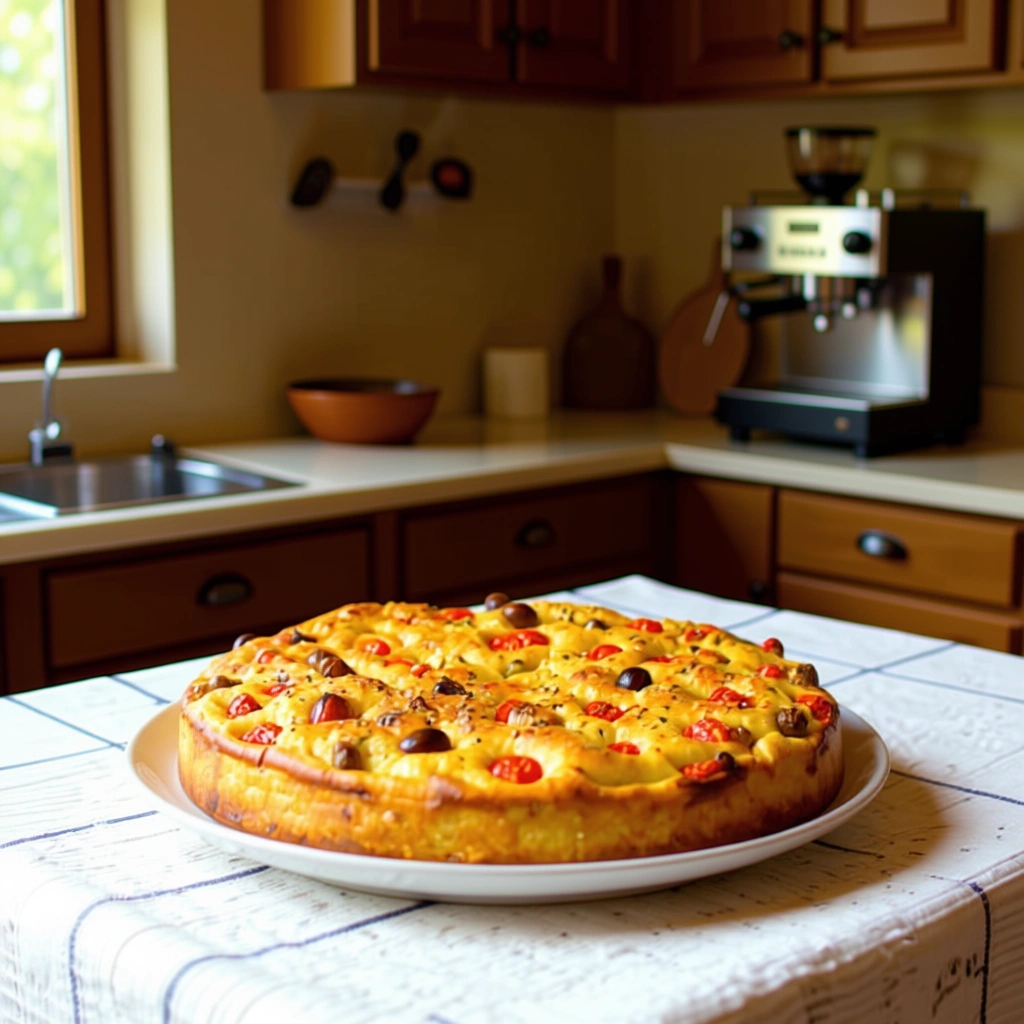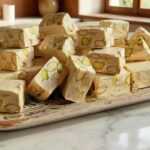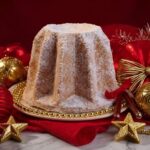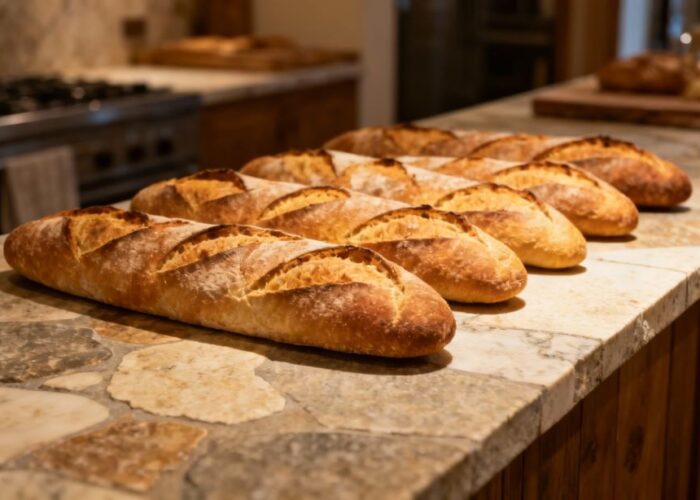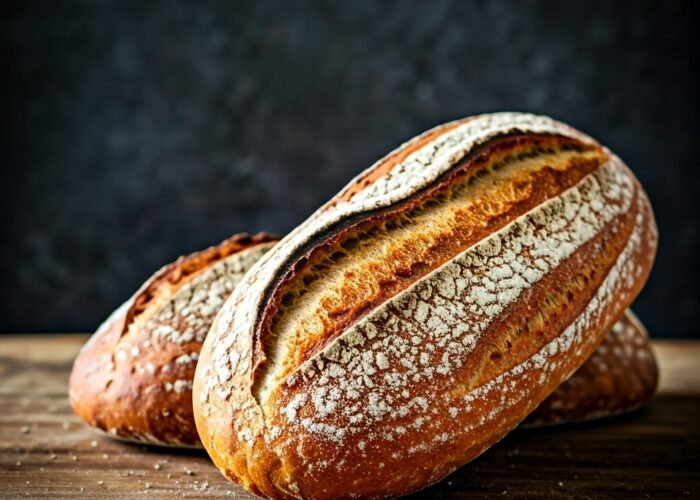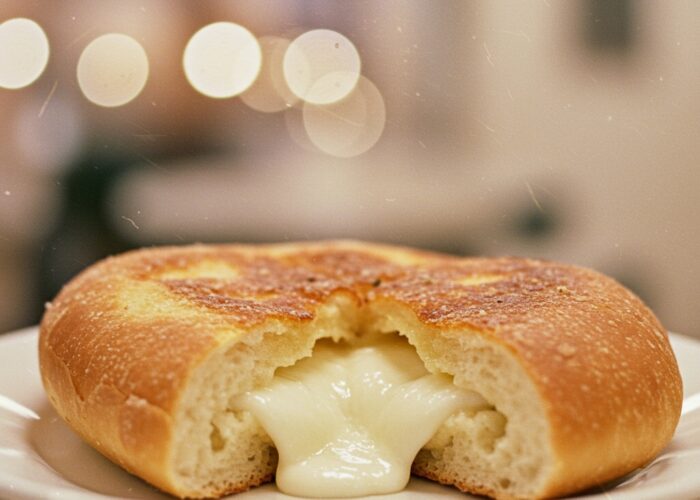Focaccia Barese: The Soul of Bari
Focaccia Barese isn’t just bread, it’s Bari’s heartbeat. Born in the sun-drenched kitchens of Puglia, this golden flatbread tells a story of sea air, family tables, and olive oil poured with love. You’ll find it everywhere in busy bakeries, on quiet village corners, and in the hands of locals wandering Bari Vecchia with a warm slice wrapped in paper.
This focaccia is soft, fluffy, and rich with the flavors of southern Italy. Ripe cherry tomatoes burst as they bake, mingling with briny olives, fragrant oregano, and a drizzle of extra virgin olive oil that turns everything golden. The secret? A humble ingredient that changed everything, potatoes.
The Potato Secret
Long ago, Barese bakers discovered that a bit of mashed potato made the dough impossibly soft, still tender hours after baking. It was a simple trick, born from necessity, that became tradition. And because Puglia is blessed with some of Italy’s best olive oil, every bite glows with that rich, fruity flavor that only local oil can give.
Focaccia’s story reaches back to ancient Rome. This ancient bread took on new life by the 18th century, local bakers were mixing flour, yeast, and potatoes, then topping the dough with the new treasure from the Americas, tomatoes.
That’s how the focaccia we know today was born: soft, rustic, and full of color. It became the people’s bread, a meal in itself. Workers packed it for long days in the fields; children grabbed it warm from the oven after school.
More Than a Recipe
Ask anyone from Bari what home smells like, and they’ll say focaccia. The scent of olive oil sizzling, tomatoes caramelizing, and oregano filling the kitchen, it’s pure comfort. On Sundays, it’s the first thing out of the oven. On holidays, it sits proudly beside every meal.
Typical Ingredients
- Flour (a mix of 00 and semolina)
- Boiled potatoes, mashed
- Yeast (fresh or dry)
- Warm water
- Extra virgin olive oil (Pugliese variety)
- Cherry tomatoes
- Black olives (often from Gaeta)
- Sea salt
- Oregano
Serving Focaccia Barese
There’s no wrong time to eat Focaccia Barese, it’s the kind of food that feels right morning, noon, or night. In Bari, people tear off a warm piece straight from the pan, still glistening with olive oil, and eat it on the go with the sea breeze in the air. No plates, no rules just pure comfort.
At home, serve it fresh from the oven, when the tomatoes are still soft and the crust crackles as you tear it. It’s perfect as a starter or side, but honestly, it can hold its own as a meal. Pair it with a few slices of prosciutto, some fresh mozzarella or burrata, and maybe a handful of olives for the ultimate southern Italian spread.
For something lighter, enjoy it with a simple salad of ripe tomatoes, arugula, and basil and of course, a drizzle of good olive oil and a glass of wine. The next day, toast a leftover slice and it’s just as good, maybe even better with your morning espresso.
Flavor Variations
The classic Focaccia Barese, soft dough, juicy cherry tomatoes, briny olives, and a drizzle of olive oil is already irresistible. But in Bari, every baker has their little twist, and every home kitchen has its favorite version.
Herbs & Fragrance: Sprinkle fresh rosemary, thyme, or sage over the dough before baking. A few thin garlic slivers make the aroma unforgettable.
Cheesy Comfort: Add shreds of mozzarella, Pecorino, or Parmesan for gooey pockets of flavor. A few spoonfuls of ricotta on top create little creamy surprises with every bite.
Veggie Goodness: Roasted bell peppers, zucchini, or caramelized onions bring color and depth, turning focaccia into a meal on its own.
A Taste of the Sea: Some coastal bakeries fold in anchovies or tuna, giving the focaccia a bold, salty kick — perfect with a glass of crisp white wine.
No matter the twist, one thing never changes: olive oil rules the show. Every version, classic or creative, still carries the heart of Bari in each golden, fragrant bite.
Storing
Focaccia Barese is best enjoyed fresh from the oven, but the good news is it keeps well too. At room temperature, wrap it in parchment paper or a clean kitchen towel and store in an airtight container for up to 2 days.
If you want to keep it longer, freeze a whole focaccia or slices in a zip-top bag for up to a month. When you’re ready to eat, simply thaw at room temperature and warm it in the oven for 5–8 minutes. The crust will crisp up, and the interior will stay soft and fragrant.
For leftovers, nothing beats a lightly toasted slice for breakfast or a quick snack. Drizzle a little olive oil on top, maybe sprinkle some sea salt, and you’ll swear it just came out of the oven.

